Comparing Polish Pottery: Handmade vs. Machine-made
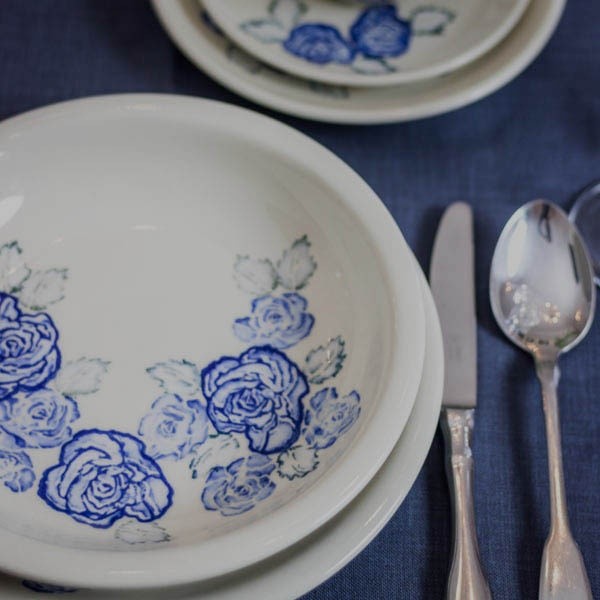
Comparing Polish Pottery: Handmade vs. Machine-made
Polish pottery has gained significant popularity worldwide for its vibrant colors and intricate designs.
If you're a fan of Polish pottery, you might be wondering about the differences between handmade and machine-made pieces. Each manufacturing technique has its own unique characteristics, quality, and overall appeal.
In this article, we'll explore these distinctions to help you make an informed choice. Let's dive into the world of Polish pottery and uncover the unique characteristics that set these two types apart.
Key Takeaways
- Handmade pottery is crafted by skilled artists, with slight variations that give it character. On the other hand, machine-made pottery offers consistency and precision in its design.
- Handmade Polish pottery has slight variations in shape and color, making each piece one-of-a-kind and giving it a distinct handmade feel.
- Machine-made Polish pottery, on the other hand, is produced using automated processes. This allows for a high level of consistency in the design, resulting in symmetrical and uniform pieces. The precision of the machines used ensures that each piece is virtually identical.
- Deciding between handmade and machine-made Polish pottery ultimately comes down to personal preference and the desired aesthetic.
- If you appreciate the uniqueness and individuality of handmade crafts, then handmade pottery may be the better choice for you. On the other hand, if you prefer a more uniform and consistent look, machine-made pottery may be more suitable.
- Regardless of whether you choose handmade or machine-made Polish pottery, both styles bring beauty and functionality to your home.
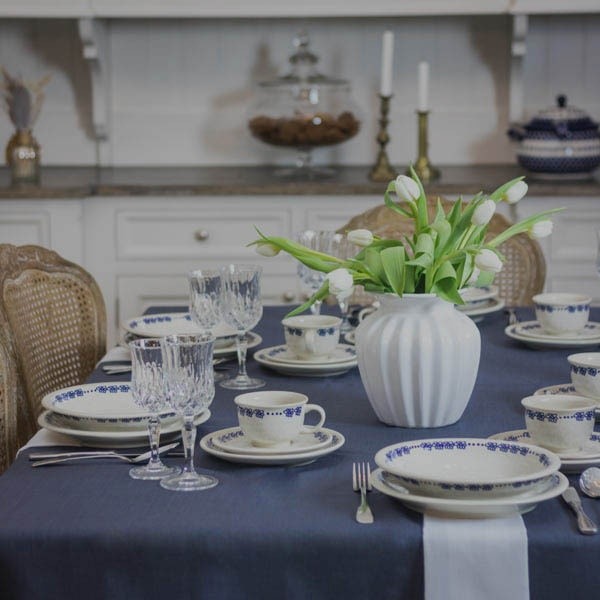
Photo from Zakladyboleslawiec
What is Handmade Polish Pottery?
Handmade Polish pottery is a type of pottery crafted and designed all by hand by skilled artisans from Bolesławiec, Poland. These skilled artisans meticulously craft each piece by hand, creating a unique ceramic piece.
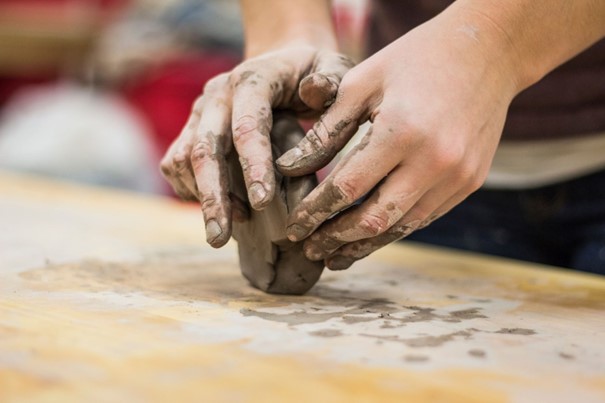
Photo by Alex Jones on Unsplash
The clay used to make this pottery is unique to the area, giving it a special quality that collectors and enthusiasts appreciate.
The designs on handmade Polish pottery are intricately painted with vibrant colors. These designs often feature elements of nature, such as flowers, animals, or trees.
Artisans apply the designs using traditional handmade stamps or brushes, adding authenticity and showcasing their craftsmanship.
Creating handmade Polish pottery involves multiple layers of painting and glazing. This process results in a durable and glossy finish that enhances the beauty of each piece.
The attention to detail and skill required to create these pieces make them highly valued and cherished art forms.
Whether you're a collector or appreciate fine craftsmanship, handmade Polish pottery is a unique and beautiful addition to any home.
Its distinctiveness, vibrant designs, and meticulous craftsmanship make it a sought-after art form that celebrates the rich tradition of Polish pottery.
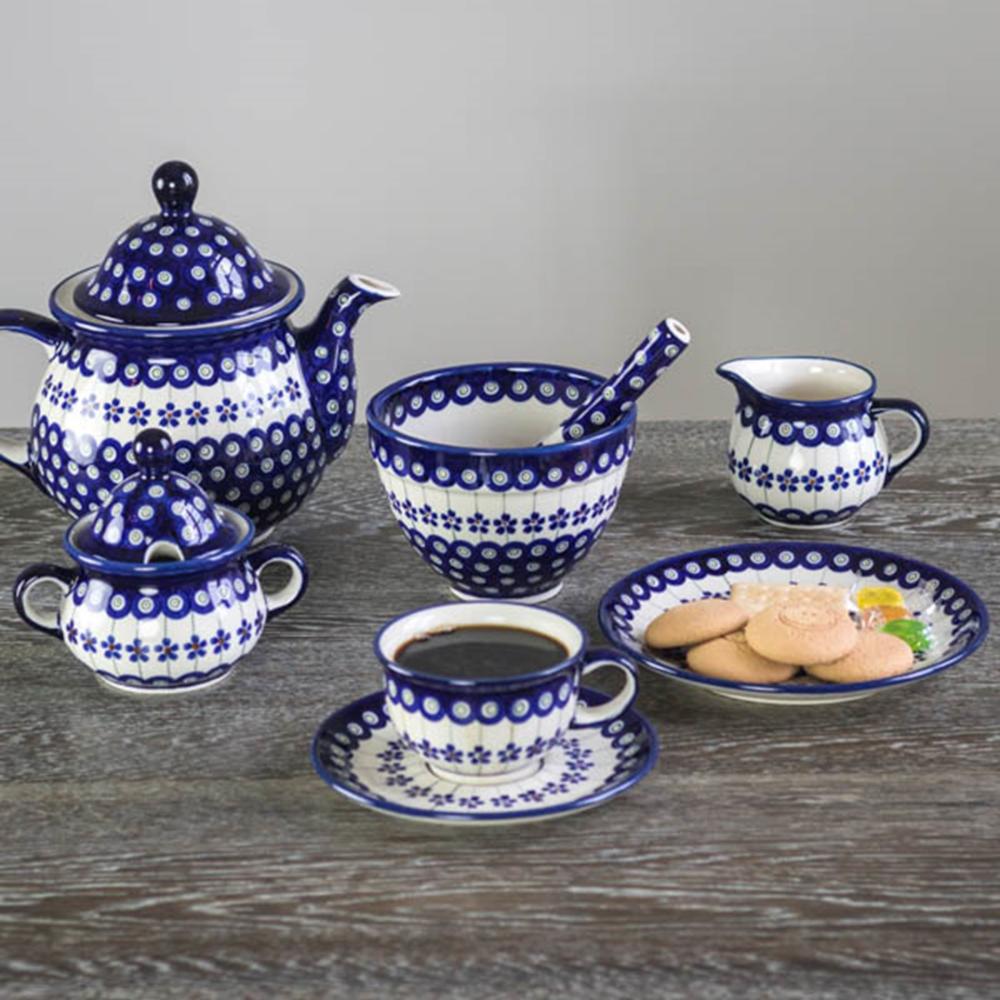
Photo by Earl Wilcox on Unsplash
What is Machine-made Polish Pottery?
Machine-made Polish pottery is produced using automated techniques and machinery, resulting in a more standardized and mass-produced product.
Unlike handmade pottery, machine-made Polish pottery often has designs transferred onto the pottery using decals or printing techniques rather than being hand-painted.
The manufacturing process for machine-made pottery is faster and more efficient, allowing for larger quantities to be produced at a lower cost compared to handmade pottery.
This means that machine-made Polish Pottery is more readily available and accessible to a wider range of people.
Although made using machinery, machine-made Polish pottery still maintains a similar level of durability and functionality as its handmade counterpart.
This is because it's made from the same type of clay. However, the lack of hand-painted details and the reliance on automated techniques may result in a loss of the unique and intricate designs that are characteristic of handmade Polish Pottery.
Differences Between Handmade and Machine-made
Handmade and machine-made Polish pottery have their own distinct differences. Here are some key differences between the two:
Craftsmanship
The craftsmanship of handmade pottery is a testament to the skill and attention to detail of the artisans who create them.
These artisans have honed their craft over generations, carefully shaping and decorating each piece by hand.
They employ traditional techniques that have been passed down through time, resulting in truly unique and one-of-a-kind items that bear the mark of their creator.
In contrast, machine-made pottery lacks the individuality and personal touch that comes with handmade pieces.
Produced in factories using automated processes, machine-made pottery often has a more uniform and mass-produced appearance.
While it can still be visually appealing, it lacks the craftsmanship and artistry evident in handmade pottery.
Quality
The dedication and expertise of these artisans result in pottery that isn't only visually stunning but also durable and long-lasting.
Handmade Polish pottery is usually made using high-quality materials, ensuring its resilience and longevity. This makes it a superior choice compared to machine-made pottery, which may be produced using lower-quality materials.
While machine-made pottery uses automated processes, it still undergoes quality control to ensure its durability.
However, it doesn't have the same level of craftsmanship or attention to detail as handmade pieces.
In terms of quality, handmade Polish pottery stands out. The care and precision put into its creation set it apart from its machine-made counterparts.
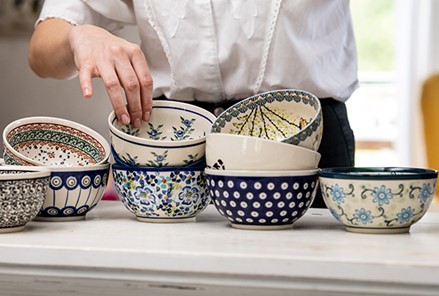
Photo from Zakladyboleslawiec
Variation
When it comes to Polish pottery, there's a noticeable difference between handmade and machine-made pieces.
Handmade pottery is crafted by artists, which means each piece is unique. The artist's touch and individual craftsmanship result in slight variations in shape, size, and color. This adds authenticity and personality to each piece, making it truly one-of-a-kind.
On the other hand, machine-made pottery is mass-produced, resulting in identical pieces. While this uniformity can be useful for creating matching sets, it lacks the charm and individuality found in handmade pottery.
Price
Handmade Polish pottery tends to be more expensive than the machine-made variety. This is because creating handmade pottery requires a lot of time, skill, and craftsmanship. Each piece is meticulously crafted by hand, resulting in a unique and high-quality product.
On the other hand, machine-made pottery is produced in larger quantities, which allows for a more affordable price. Automated machinery is used to speed up production and reduce labor costs.
While machine-made pottery may lack the individuality and attention to detail found in handmade pieces, it provides a more budget-friendly option for those who still want to enjoy the beauty and functionality of Polish pottery.
Photo from Zakladyboleslawiec
Which One Should You Choose?
Handmade pottery is crafted by skilled artisans, resulting in intricate craftsmanship and attention to detail.
Each piece has a sense of artistry that machines can't replicate. This makes handmade pottery highly valued by collectors and those seeking special and valuable items.
On the other hand, machine-made pottery offers affordability and consistency in design. It's a practical choice for everyday use or when purchasing larger sets.
Machine-made pieces are produced in a controlled environment, ensuring uniformity and accessibility.
Ultimately, the decision between handmade and machine-made Polish pottery depends on your personal preferences, budget, and intended use.
Whether you choose handmade or machine-made Polish pottery, both styles will surely bring beauty and functionality to your home.
The vibrant colors and intricate patterns of Polish pottery make it a popular choice for decorative and practical purposes.







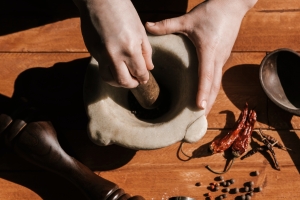



Validate your login
Sign In
Create New Account